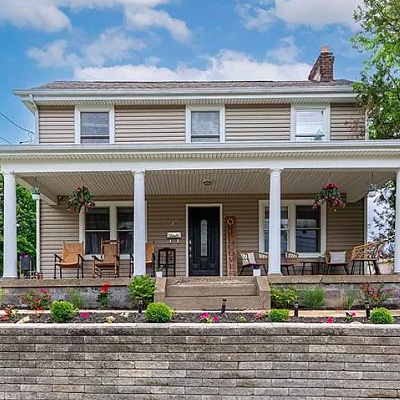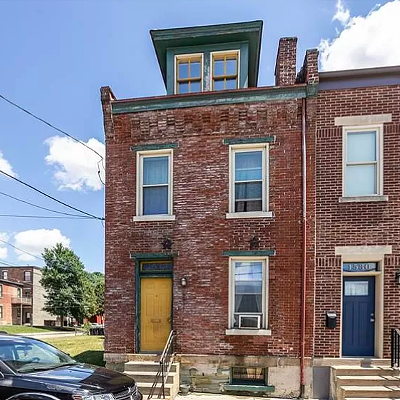Three things make me suspect the answer is no. First, the blue heron dwells mostly alongside rivers and other bodies of water. Second, its name is spelled with just one "r." Third, the Pittsburgh Penguins are the only waterfowl in the city that gets to determine naming rights.
In fact, the Penguins' nesting place isn't far from the ancestral home of the Herron family, which gave the street its name. Herron Avenue is named for Herron Hill, the geographical feature that put the "Hill" in "Hill District." Topping out at a whopping 1,260 feet above sea level, Herron Hill marks the highest point in Pittsburgh. That's part of the reason it was once the site of one of the city's most important reservoirs: Gravity helped push water through city pipes. (Not to mention the fact residents could now boast of drinking mountain-fed water, straight from the big-sky country of Pittsburgh's alpine regions.)
The Herrons themselves once used the land to secure a tidy little nest egg for themselves. According to the Pittsburgh History & Landmarks Foundation, members of the Herron family had settled on the hill around the mid-1700s. They made a fortune in coal and lumber, and subsequent members of the family invested in factories that manufactured everything from brass to cotton batting -- fluffed cotton used in quilts and surgical dressings -- and objects of varying hardness in between. Herron coal, dug out from a part of town known as Minersville, was used to power Pittsburgh's gas works and was shipped as far away as New Orleans, carried by Herron-owned flatboats.
Over the years, the family became one of Pittsburgh's most prominent. The first pastor of Pittsburgh's First Presbyterian church was Francis Herron; given his association with the shadowy rites of Scottish Presbyterianism, he was apparently the black sheep of his family's third generation here. But probably the most prominent member of the family was William A. Herron, of whom a Pittsburgh Post obituary in 1900 said, "There, perhaps, was no one in the city who knew Pittsburgh, both above and below the surface, as well." In addition to his business interests, Herron served six years in county government -- this, apparently, is where the reference to "below the surface" comes from -- as the clerk of courts.
Like many Pittsburghers, Herron never really traveled far from home. As a biography in the 1889 History of Allegheny County puts it, he was born "within gunshot of the handsome residence in which he now lives." Apparently that was how they measured distances in those days ... although even today I think the sign of a happy family is one in which you can live within shooting distance of your relatives. Herron helped plan the defenses of Pittsburgh during the Civil War and was given the rank of colonel, though he saw no more combat than the average member of the Bush administration. His biography describes him being "as straight as an arrow," though one wonders whether the same could be said of the biography's author, given all his panting over how Herron "is in the full vigor of ripe manhood" and how he has "more friends to the square mile than any other man in Western Pennsylvania."
But the Herron family's most lasting legacy to those friends was the land the Herron Hill reservoir sits on. Built in 1880, the reservoir was a desperately needed improvement for a rapidly expanding city. The city's population grew six-fold in the last three decades of the 1800s. That growth ensured Herron had even more friends per square mile, but it also meant that more of those friends would be likely to keel over from disease without potable water.
And the Herrons were able to feather their own nests in the bargain: In 1872, the family sold 13 acres of land to the city of Pittsburgh at a cost of $100,000. Not a small sum at that time, though it would barely pay for a couple beers at a Penguins game today.










